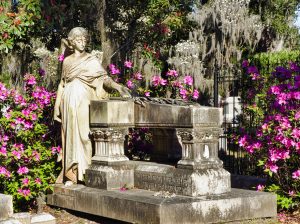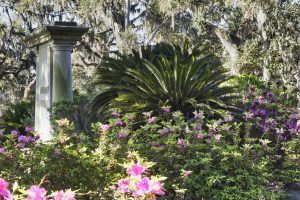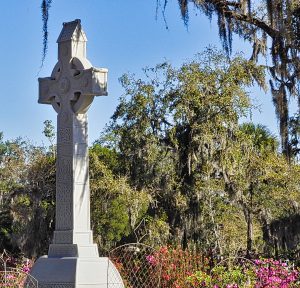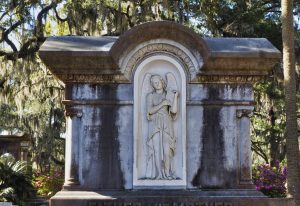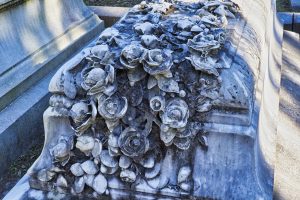Poems have been written about it. Oscar Wilde called it, “incomparable.” John Muir slept for 6 days and nights in it when he took his famous 1,000 Mile Walk in America. Bonaventure Cemetery is, in the spring, one of the most beautiful man-made places I have ever seen.
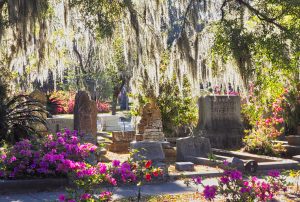
We were dazzled by the artistry in the stonework, the loving and inspirational messages inscribed on that stonework, the live oak tunnels covered with long moss, the bounty of azaleas and the serenity of Bonaventure Cemetery along the banks of the Wilmington River. We wanted to stay all day and come back for more once the day ended.
I gazed awe-stricken as one newly-arrived from another world. Bonaventure is called a graveyard, a town of the dead, but the few graves are powerless in such a depth of life. The rippling of living waters, the song of birds, the joyous confidence of flowers, the calm, undisturbed grandeur of the oaks, mark this place of graves as one of the Lord’s most favored abodes of life and light.
-“Camping in the Tombs” from A Thousand Mile Walk by John Muir.
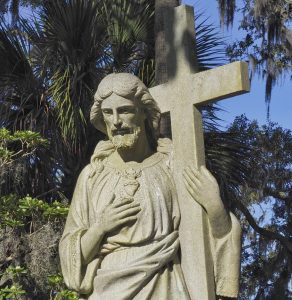 |
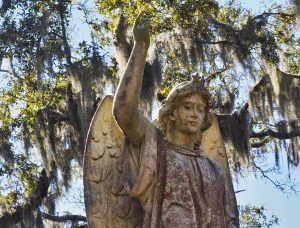 |
Bonaventure began as a 600-acre plantation, located three miles from Savannah. It became famous when it was featured in the 1994 novel, “Midnight in the Garden of Good and Evil,” by John Berendt and the movie directed by Clint Eastwood that was based on the book.
One of the original owners was Josiah Tattnall and there is both a Tattnall Lane within Bonaventure as well as a number of family members buried there. When the lands of British sympathizers were confiscated in 1777, Tattnall and many others left for England.
After passing through the hands of other owners, Bonaventure was eventually purchased by Tattnall once more when he returned to Georgia. He served as a U.S. Senator from 1796-1799 and was Governor of Georgia in 1801 and 1802. He is buried in Bonaventure.
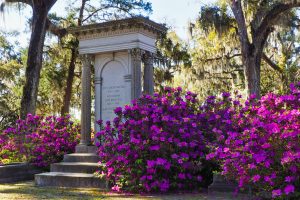
The land wasn’t used as a cemetery until 1846. It became a public cemetery in 1907. Victorians picnicked in the cemetery.
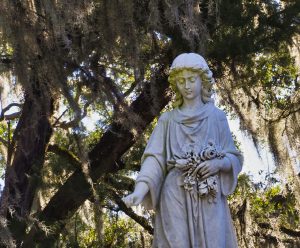
Bonaventure is sacred ground, an art gallery and a testament to bon vivants in the tradition of the Old South. It is known that there is a bench within a plot near the rear center of the cemetery, upon which visitors drink martinis and sip champagne.
The messages inscribed on monuments and gravestones are both inspiring and humorous. One reads, “Here lies Martha; she did the best she could.” Another says, “We have loved the stars too fondly to be fearful of the night.”
WHO SCULPTED THE MONUMENTS?
Many of Savannah’s wealthy families worked with Northeastern monument makers, Struthers and Sons, one of Philadelphia’s most well-known marble companies for three generations. They created the monuments for the Telfair family, the Jones family and Edward Padelford.
Robert D. Walker opened a local marble yard in 1840 and created many of the monuments in Bonaventure.
The most famous artist who created some of the most photographed works in Bonaventure is John Walz. Walz was born in Germany but lived in Philadelphia. He trained in Paris and Vienna. Walz came to Savannah in 1885 to oversee the installation of five of his sculptures in the city.
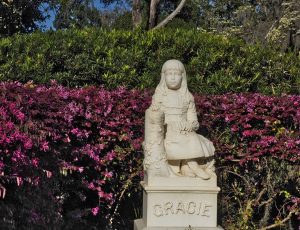
He became so successful, that there are over 70 works by Walz in Bonaventure. In 1894, Walz completed the sculpture of Gracie Watson, a 6-year old girl who died suddenly.
Walz produced what are, perhaps, the most photographed statues in Bonaventure Cemetery. In a time when fine statues took years to produce, the two statues were done within a year, due to pressure from the man who commissioned them.
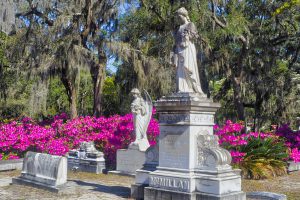
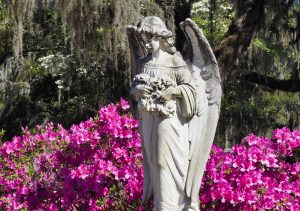 |
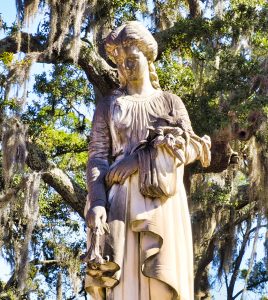 |
One of the most visited plots is that of the Lawton family. Mr. Lawton commissioned his own memorial. However, his beloved daughter, Corinne, died first. One story is that she was the victim of forbidden love. For weeks she refused visitors, quit eating and speaking. She plunged herself into the icy waters of St. Augustine Creek. Another account states that Corrine had been ill for a couple of weeks prior to her death. Regardless of how she died, the memorials (he also built a performing arts center named for her since the two of them loved the arts) speak of a father’s love for his daughter. Corinne’s sculpture is by Benedetto Civiletti and was brought to Bonaventure from Palermo.
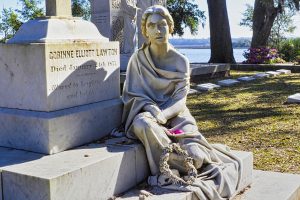 |
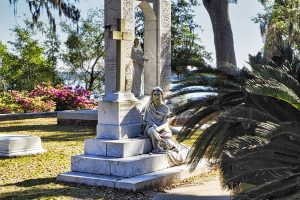 |
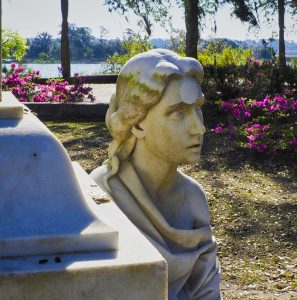 |
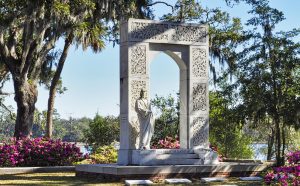 |
FAMOUS PEOPLE IN BONAVENTURE
Songwriter, Johnny Mercer: Among others, he wrote such songs as “Moon River,” “Jeepers Creepers, “Hooray for Hollywood,” “I’m an Old Cowhand,” and “You Must’ve Been a Beautiful Baby.”
Writer, Conrad Potter Aiken: Aiken’s best friend was T.S. Eliot
Painter, Mary Hoover Aiken: one of the finest female painters of the 20th century.
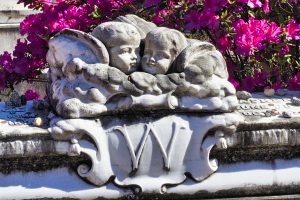 |
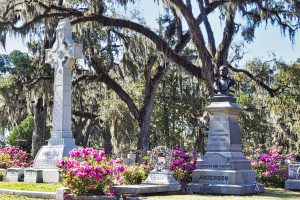 |
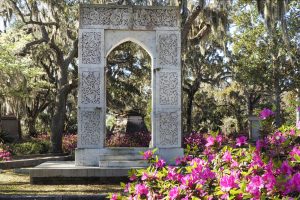 |
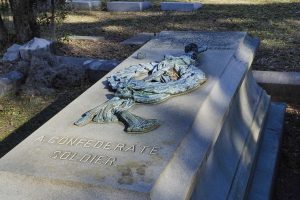 |
|
|
 |
|
|
|
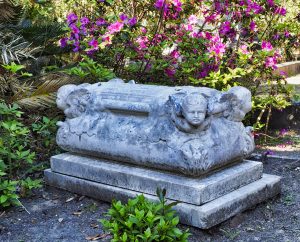 |
|
DO NOT visit Savannah without going to Bonaventure Cemetery! The history, beauty and serenity you will find there will stay with you for a long, long time.
Bonaventure Cemetery: 330 Bonaventure Road, Thunderbolt, GA 31404
Opens 8 a.m.-5 p.m. daily. Free of Charge
Many Tours available. For Tours and a Map, see: www.bonaventurecemetery.org
